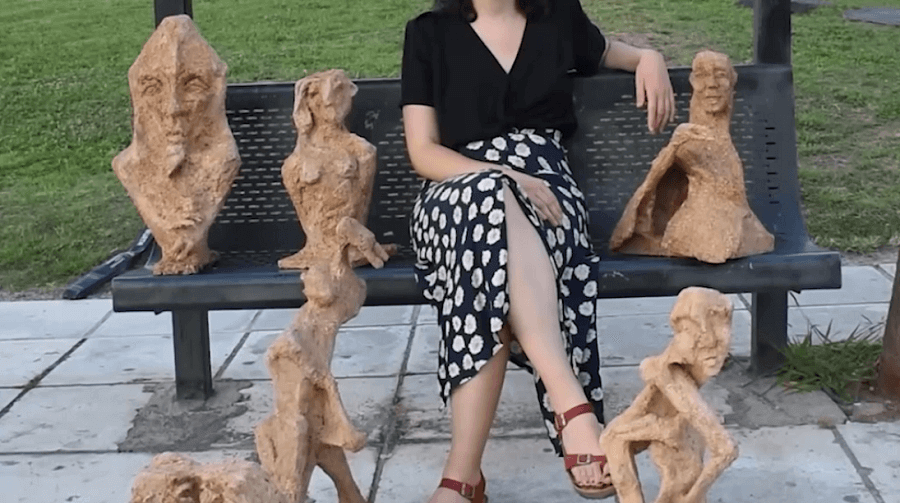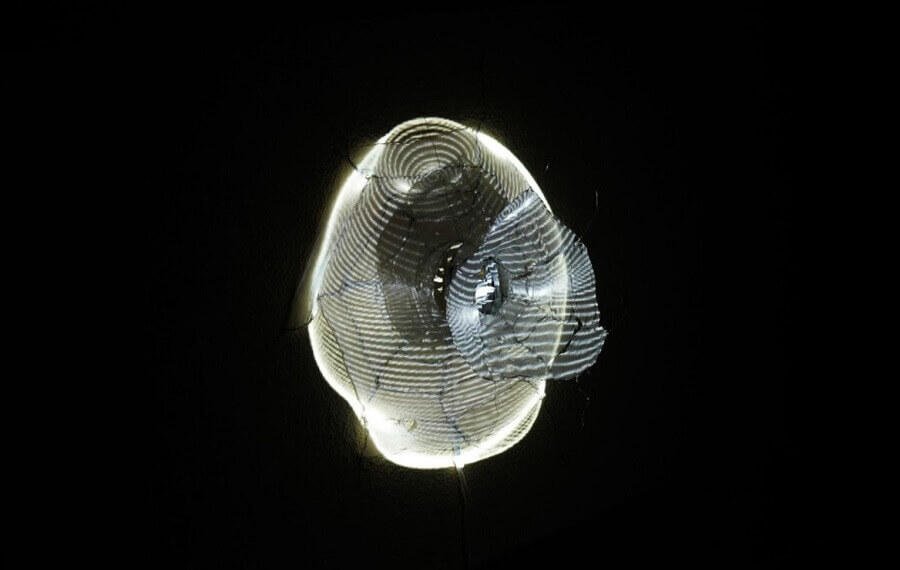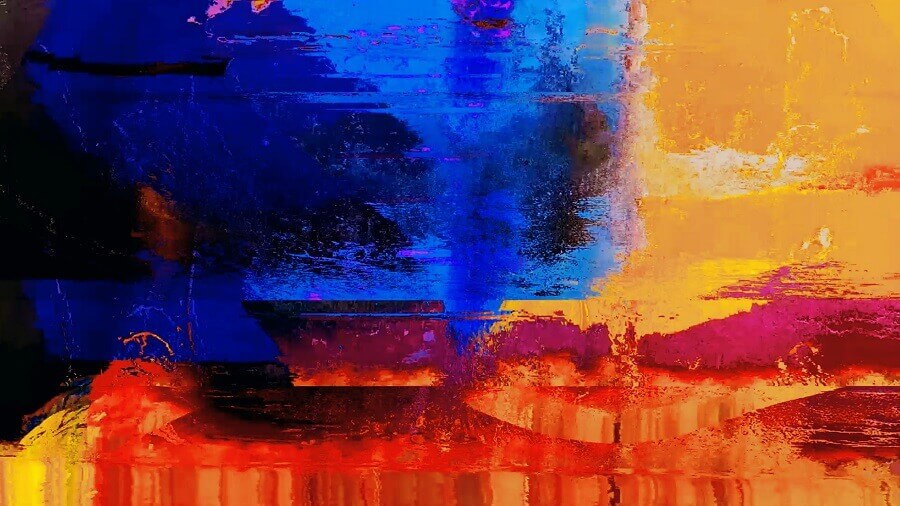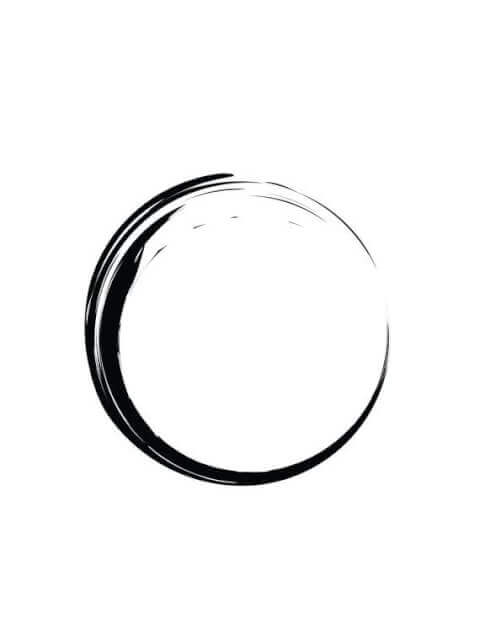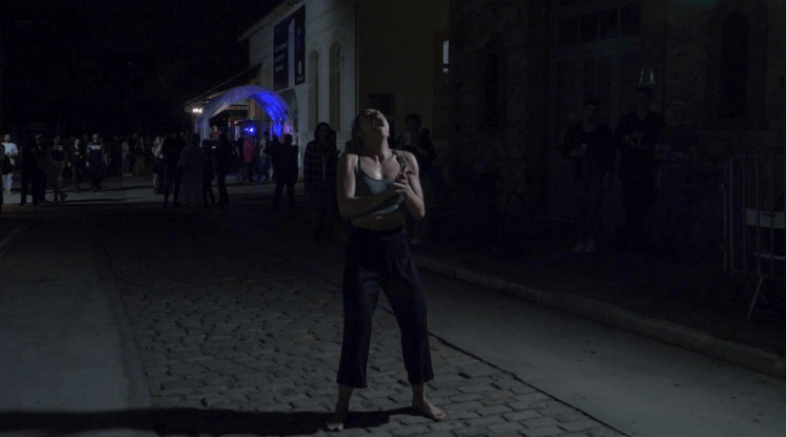become

In this video art work 39 persons of different ages are invited to sit in front of the same black door, talk about their favourite object and in what, by using this object, they could be transformed. In the final cut only the silent expressions are kept.
Related Works
Multiple distance sensors trigger sound events ας people move around and get close to the grid with the srceens.
Α video art piece with performance and art installation elements in public space.
Myths are living stories that grow with time, change, adapt, but continue being a source for research, inspiration and creativity. The interactive audiovisual theatrical performance INRIRI questions the adaptation of an archetypal myth at a time of many dimensions and levels with elements from physical theater and embedded interactive technology in the performing space. Parts of the story are a Caribbean myth which transforms the body, a woodpecker and some new experimental technologies. On stage two bodies try to communicate with themselves and the environment around them and to discover anew what a body can be, what the relation and connection with the other body and which are the influences of the surrounding space on them.
Blah as an artwork that interacts with the phenomenon of the speaking subject. The artwork responds to the human voice with air, and the intensity of the air is proportional to the volume of the voice.
Borrowing immersive practices from physical theater and the Black Box framework, the project seeks to create a liberating condition where visitors have the opportunity to experiment with their voice outside the system of organized language.
Blah is the artistic part of my master thesis on the problematic behind the three dimensions of organized language: communication-expression-meaning.
1x1x0.4
The title of this artwork is "Where Do I Exist?". This is a virtual space that explores the relationship between reality and virtual reality. Moreover, it the result of a pandemic society that tends to communicate through social media. It is the impression of our lifes into a virtual world, free from our body and the stereotypes it might follows it. Could we be free from our body and ideas such as gender identity and death? What is the meaning of touch into an immaterial world? Anyone can be part of this artwork with a twitter hashtag of the word #immaterial.
When the observer is standing in front of a work of art and is trying to comprehend it, they are consciously entering a recognition process. This is achieved because the brain recognizes the relationship between some shapes or colors in the piece of art and, automatically, recalls them from memory. This procedure creates the necessary conditions for the creation of new neural synapses. Using these facts?, the artist suggests an audiovisual performance that includes an interference of audio to the visual aspect? in real time.
A freediver transforms into water while he dives beneath the surface, connects with nature and becomes a part of the underwater environment by hunting like a marine predator.
The mesmerizing underwater world is accessible to those who overcome fear and dare to push their human limits a little further in order to explore it. The passion with the serene world beneath the surface becomes a lifestyle for those who surrender themselves to negative buoyancy.
The Video installation in the exhibition emphasizes and at the same time negates the temporality of a medium whose dominant form of expression is space.



